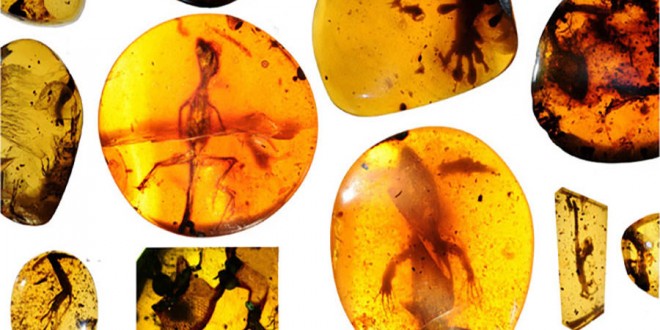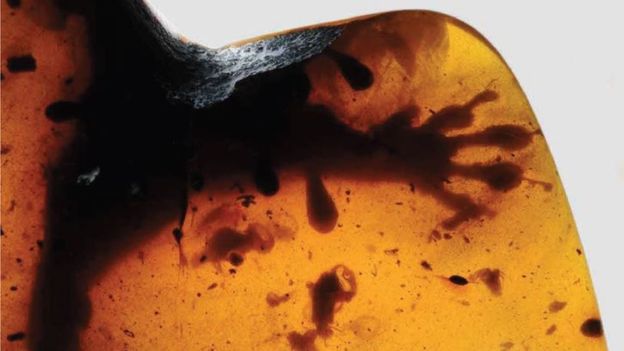Scientists have analyzed amber fossils of lizards found in modern day Myanmar, which show the diversity of life in the tropics during the mid-Cretaceous period.
Researchers have studied the oldest collection of lizards preserved in amber, which gives an insight into life in the tropics around 100 million years ago, during the middle Cretaceous period.
The early chameleon was creeping through the ancient tropics of present-day Myanmar when it succumbed to the resin of a coniferous tree. Over time, the resin fossilized into amber, leaving the lizard remarkably preserved. Seventy-eight million years older than the previous oldest specimen on record, the dime-size chameleon along with 11 more ancient fossil lizards were pulled, encased in amber, from a mine decades ago, but it wasn’t until recently that scientists had the opportunity to analyze them.
In “Jurassic Park,” fictional scientists cloned dinosaurs with blood extracted from amber, but these real-life fossils hold snapshots of “missing links” in the evolutionary history of lizards that will allow scientists to gain a better understanding of where they fit on the tree of life, said Edward Stanley, a University of Florida postdoctoral student in herpetology at the Florida Museum of Natural History.
Of the 12 lizard specimens, three—a gecko, an archaic lizard and the chameleon—were particularly well-preserved. The new species will be named and described in a future study.
“These fossils tell us a lot about the extraordinary, but previously unknown diversity of lizards in ancient tropical forests,” said Stanley, co-author of a new study appearing online today in the journal Science Advances. “The fossil record is sparse because the delicate skin and fragile bones of small lizards do not usually preserve, especially in the tropics, which makes the new amber fossils an incredibly rare and unique window into a critical period of diversification.”
Stanley first encountered the amber fossils at the American Museum of Natural History after a private collector donated them. He knew the fossils were ancient, but it was a combination of luck and micro-CT technology that allowed him to identify the oldest chameleon.
“It was mind-blowing,” he said, to see the fossils for the first time. “Usually we have a foot or other small part preserved in amber, but these are whole specimens—claws, toepads, teeth, even perfectly intact colored scales. I was familiar with CT technology, so I realized this was an opportunity to look more closely and put the lizards into evolutionary perspective.”
A micro-CT scanner looked inside the amber without damaging the fossils, allowing study researchers to digitally piece together tiny bones and examine soft tissue. Scanned images of the detailed preservation provided insight into the anatomy and ecology of ancient lizards, Stanley said.
The amber gecko, for example, confirms the group already had highly advanced adhesive toe pads used for climbing, suggesting this adaptation originated earlier. As for the Southeast Asian chameleon, the find significantly pushes back the origins of the group and challenges long-held views that chameleons got their start in Africa. Stanley said it also reveals the evolutionary order of chameleons’ strange and highly derived features. The amber-trapped lizard has the iconic projectile tongue of modern chameleons, but had not yet developed the unique body shape and fused toes specially adapted for gripping that we see today.
Stanley said the fact that these incredibly ancient lizards have modern counterparts living today in the Old World tropics speaks to the stability of tropical forests.
“These exquisitely preserved examples of past diversity show us why we should be protecting these areas where their modern relatives live today,” Stanley said. “The tropics often act as a stable refuge where biodiversity tends to accumulate, while other places are more variable in terms of climate and species. However, the tropics are not impervious to human efforts to destroy them.”
Agencies/Canadajournal
 Canada Journal – News of the World Articles and videos to bring you the biggest Canadian news stories from across the country every day
Canada Journal – News of the World Articles and videos to bring you the biggest Canadian news stories from across the country every day




